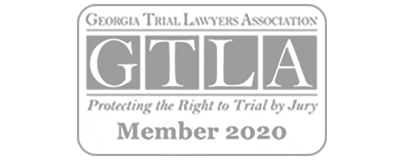Home | Glossary of Personal Injury Terms | Back Injuries
Back Injuries
Back injuries are a prevalent concern, with back pain cited as one of the leading reasons employees miss work. These injuries can be incredibly debilitating, often leaving individuals in discomfort regardless of their position—whether standing, sitting, or lying down. Let’s delve into the anatomy of the back, various types of injuries that can occur, and the compensation avenues available for those affected.
The Anatomy of the Back
The back is a complex structure that supports the upper body’s weight and grants flexibility for movement. The backbone, or spine, consists of 24 individual vertebrae rather than a single rigid bone. This unique structure allows for both stability and mobility.
Vertebrae Breakdown
- Cervical Vertebrae. The neck contains seven vertebrae. These vertebrae support the head and protect portions of the spinal cord that regulate essential functions such as breathing and swallowing.
- Thoracic Vertebrae. Comprising twelve vertebrae in the upper back, these connect with the ribs to form a protective cage around vital organs.
- Lumbar Vertebrae. The lower back contains five lumbar vertebrae, crucial for bearing the body’s weight and transferring it to the pelvis.
Interspersed between these vertebrae are discs, which serve as cushions. These discs consist of a tough outer layer and a soft inner core, allowing for smooth movement and shock absorption. Ligaments play a vital role in stabilizing the spine and connecting the ribs to the vertebrae, while muscles anchor to various points throughout the back, facilitating motion and support.
Causes of Back Injuries
Back injuries can arise from several factors, including diseases, trauma, or repetitive strain. Here are some common causes.
Hyperextension
When someone stretches or bends their back beyond its normal range typically due to sudden accidents or falls.
Hyperextension can happen even without direct impact, as whipping motions can strain the back.
Blunt Force Impact
An object striking the back without breaking the skin is classified as a blunt force injury. This type of trauma can lead to significant damage to discs and vertebrae, commonly occurring in slip-and-fall incidents.
Penetrating Impact
A penetrating injury involves an object piercing the back, resulting in an open wound. This type of injury can occur in workplace accidents, such as falls from heights.
Types of Back Injuries
Back injuries manifest in various forms, each requiring different treatment approaches. Here are some common types.
Back Strains and Sprains
- Back Strain. This injury involves the tearing or stretching of muscles or tendons, leading to symptoms like pain, swelling, stiffness, and muscle spasms.
- Back Sprain. This occurs when ligaments are torn or stretched, often causing pain, swelling, and bruising. Both strains and sprains typically heal through conservative treatments such as rest and anti-inflammatory medication.
Damaged Discs
Accidents can compress spinal discs, leading to conditions such as herniated or bulging discs. A herniated disc involves the inner nucleus protruding through the outer annulus, potentially pressing against nerves and causing pain, numbness, or weakness.
Fractured Vertebrae
A fractured vertebra poses a severe risk, as bone fragments may impinge on the spinal cord, leading to paralysis. Injuries to different vertebrae can result in varying degrees of paralysis, depending on their location.
Seeking Compensation for Back Injuries
You may be entitled to compensation if you suffer a back injury due to someone else’s negligence.
Types of Compensation
- Economic Losses. These include medical bills, lost wages, and reduced earning potential due to disabilities.
- Non-Economic Losses. These damages pertain to quality of life, encompassing pain, suffering, and the inability to engage in activities once enjoyed.

GEORGIA PERSONAL INJURY LAWYER NEAR ME
Consulting a Georgia Personal Injury Lawyer
Back injuries can lead to chronic pain and long-term health issues. If you’ve experienced a back injury due to another’s negligence, it’s crucial to seek legal advice. A personal injury lawyer can help navigate your case and ensure you receive the compensation you deserve.
For a free consultation regarding your back injury and potential compensation, consider reaching out to a qualified personal injury attorney.
GET A FREE CASE REVIEW
PRACTICE AREAS
Frequently Asked Questions?
Do I need a personal injury attorney?
The Jewkes Firm is well-versed in effectively challenging major insurance companies on your behalf to secure the highest settlement permissible by law. Our primary objective is to ensure your optimal recovery. It is only after this point that we assess the worth of your case.
What is the deadline for filing an injury case in Georgia?
The timeframe for filing an injury case, also known as the statute of limitations, can vary significantly. As per OCGA §9-3-33, you are granted a two-year period from the date of your injuries or the passing of a family member to initiate your personal injury claim.
What is the cost to hire a personal injury attorney?
There is no upfront cost associated with hiring a personal injury lawyer. Our fees are based on a percentage of your settlement, meaning you only pay if we successfully recover compensation. Our top priority is ensuring your well-being and helping you return to your normal life.
What damages can you recover from a personal injury?
A personal injury lawyer aims to establish negligence and seek restitution for the harm caused by the liable party. Additionally, you may be entitled to compensation for funeral costs, medical expenses, and income lost if you are a family member of someone who died as a result of an injury.
Free Case Evaluation











